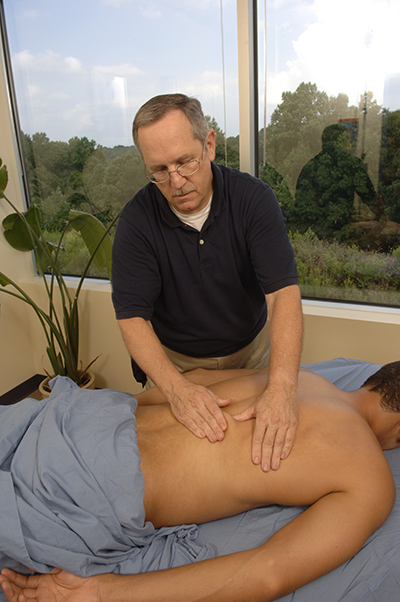Massage for Fibromyalgia: A Therapist's Point of View
 Massage therapy can improve chronic pain and fibromyalgia symptoms. Deep relaxation reduces stress, pain, and muscle tension.
Massage therapy can improve chronic pain and fibromyalgia symptoms. Deep relaxation reduces stress, pain, and muscle tension.
By: Sharon Muzio, RN, NCBTMB
I have been privileged to practice therapeutic massage full time, in private practice, for several years. Being a Registered Nurse has largely guided my practice to serve many people with chronic pain. Many of my clients have been diagnosed with fibromyalgia. Often they have a dual diagnosis of OA (osteoarthritis), hypothyroidism, and/or lupus.
I live and practice where we experience all four seasons and lots of weather shifts. It amazes me that, although my fibromyalgia clients live very different lives, vary greatly in age, and do not know one another, they all present with similar pain patterns. For example, when the summer begins many clients experience an increase in tenderpoint pain. Often they associate this with air conditioning and artificially cold environments. When we are facing a storm front, the pattern that presents is often a tight upper neck and head and/or forehead pain, and even migraines. In winter many clients relate that they are experiencing "fibro flares," meaning general fatigue, and overall flu-like pain with mild depression. Generally, therapeutic massage helps to decrease these symptoms. *
I practice a more clinical massage therapy, focusing on pain relief and mobility improvement. In my practice, I have found that an eclectic massage works best. This combines trigger point therapy and myofacial release technique with relaxation techniques—in other words, long soothing strokes with mild rocking; then when the muscles are warm, a deeper pressure with deeper friction strokes over the knots to break down the fibers, release the toxins, and reduce the pain they create.
The University Of Miami School of Medicine, Touch Research Institute, has conducted various studies regarding the benefits of massage therapy. In a study geared to fibromyalgia patients, it was concluded that massage therapy provided the following benefits: increased serotonin level, decreased circulating stress hormones, decreased levels of substance P (basically a pain messenger), decreased tender point pain, improved sleep patterns, and improved overall sense of well-being. The principal investigators stated that massage therapy is a clinically significant complimentary treatment for fibromyalgia.
I have seen the impact massage therapy has on my fibromyalgia clients. They often enter the session feeling stiffness and discomfort, and leave feeling lighter and in less pain. I have also seen first hand the mood-elevating effect massage therapy has on a person who is feeling down.
Jane Wagner, a 68-year-old client diagnosed in 1964, states, "Massage therapy helps me to feel less pain, and I sleep better on the days I get therapy." Jane further advises: "Once you go to therapy on a regular basis, the therapist knows your body and can feel tight spots that you don’t even know you have. Once they are released, you feel so much better." Jane utilizes an indoor pool exercise program three times per week, along with massage therapy sessions every other week to help manage her fibromyalgia.
Many clients claim that monthly massage sessions keep their pain under control. Gail Lewis, a 50-something client diagnosed with fibromyalgia 10 years ago, states "Massage therapy has helped me get through really bad bouts with deep spinal pain and tenderpoint pain."
Based on what I have experienced in my practice, I view therapeutic massage as a tool that can help people take ownership of their fibromyalgia in a positive, healing way. Regular sessions can help people reconnect with themselves, and facilitate a deep state of relaxation through which they can release some of their pain. During massage the breathing slows down, as does the heart rate. This leads to a state of deep relaxation, kind of a pre-sleep state. Once you have received several sessions, your body can become more conditioned to reproduce this state of deep relaxation.
*It is important to note that you should select your massage therapist carefully. Utilize state licensing websites or national certification web sites to search for a certified therapist in your area. A helpful website is www.NCBTMB.com, where you can locate a Nationally Certified Massage Therapist in your zip code. Once you have identified a therapist, call for an interview. Ask for credentials and extent of experience working with fibromyalgia patients. Remember, although massage is very beneficial for everyone, it can be a painful experience for a fibromyalgia patient if not properly performed.
2007091320131114






